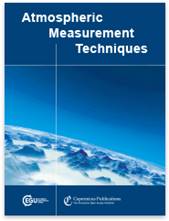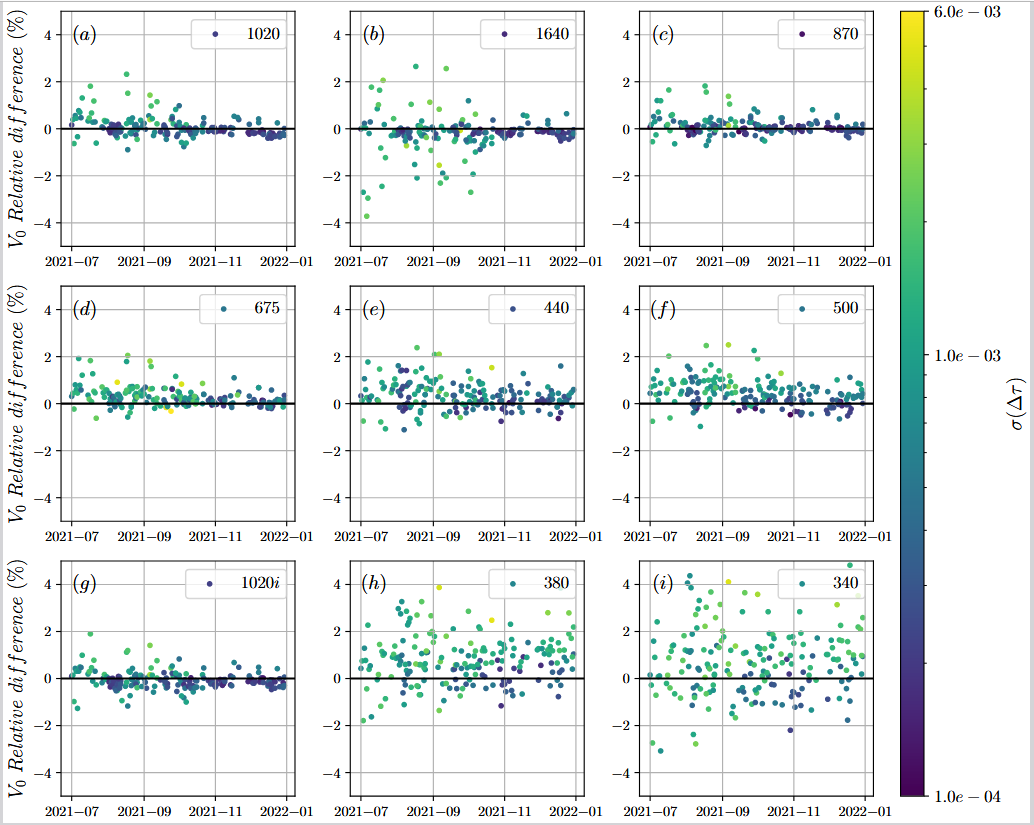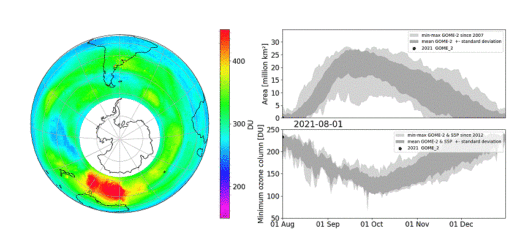The Langley ratio method, a new approach for transferring photometer calibration from direct sun measurements

Clic here for spanish version
This work presents a new method for transferring calibration from a reference sun photometer, referred to as the “master”, to a secondary sun photometer, referred to as the “field”, using a synergetic approach when master and field instruments have different spectral bands. The method was first applied between a precision filter radiometer (denoted PFR) instrument from the World Optical Depth Research and Calibration Center (WORCC), considered the reference by the WMO (World Meteorological Organization), and a CE318-TS photometer (denoted Cimel), the standard photometer used by AERONET (AErosol RObotic NETwork). These two photometers have different optics, suntracking systems, and spectral bands. The Langley ratio (LR) method proposed in this study was used to transfer calibration to the closest spectral bands for 1 min synchronous data for air masses between 2 and 5, and it was compared to the state-of-the-art Langley calibration technique.
The study was conducted at two different locations, Izaña Observatory (IZO) and Valladolid, where measurements were collected almost simultaneously over a 6-months period under different aerosol regimes. In terms of calibration aspects, our results showed very low relative differences and standard deviations in the calibration constant transferred in IZO from the PFR to the Cimel: up to 0.29 % and 0.46 %, respectively, once external factors such as different fields of view between photometers or the presence of calibration issues were considered (see Figure 1). However, these differences were higher in the comparison performed at Valladolid (1.04 %) and in the shorter wavelength spectral bands (up to 0.78 % in IZO and 1.61 % in Valladolid).

Figure 1.- Daily V0,λ relative differences (in %) between the calibration constant obtained by applying the standard Langley calibration (V SL0,λ) to the CE318-TS instrument no. 1089 at IZO and the calibration constant transferred to the Cimel from the PFR by applying the LR method (VLR0,λ ) to daily observations at IZO. Each panel corresponds to the nine spectral bands of the CE318-TS, compared to the nearest PFR spectral band by means of the ratios (VFλF /VMλM ) at 1020/862, 1640/862, 870/862, 675/500, 440/412, 500/500, 1020/862, 380/368 and 340/368. The colorbar indicates the standard deviation of Δτ.
Additionally, the LR method was successfully used to transfer calibrations between different versions of the CE318-T photometer, providing an accurate calibration transfer (0.17 % to 0.69 %) in the morning LRs, even when the instruments had differences in their central wavelengths (Δλ up to 91 nm).
Overall, our results indicate that the LR method is a useful tool not only for transferring calibrations but also for detecting and correcting possible instrumental issues. This is exemplified by the temperature dependence of the signal on the two Cimel UV spectral bands, which was estimated by means of the LR method, resulting in a signal rate of change of approximately −0.09 × 10−2 per degree in the case of 380 nm and approximately −0.03 × 10−2 per degree in the case of 340 nm. This estimation allowed us to implement the first operative temperature correction on ultraviolet (UV) spectral bands.
For more details about this work please refer to: Almansa, A. F., Barreto, Á., Kouremeti, N., González, R., Masoom, A., Toledano, C., Gröbner, J., García, R. D., González, Y., Kazadzis, S., Victori, S., Álvarez, Ó., Maupin, F., Carreño, V., Cachorro, V. E., and Cuevas, E.: The Langley ratio method, a new approach for transferring photometer calibration from direct sun measurements, Atmos. Meas. Tech., 17, 659–675, https://doi.org/10.5194/amt-17-659-2024, 2024.







